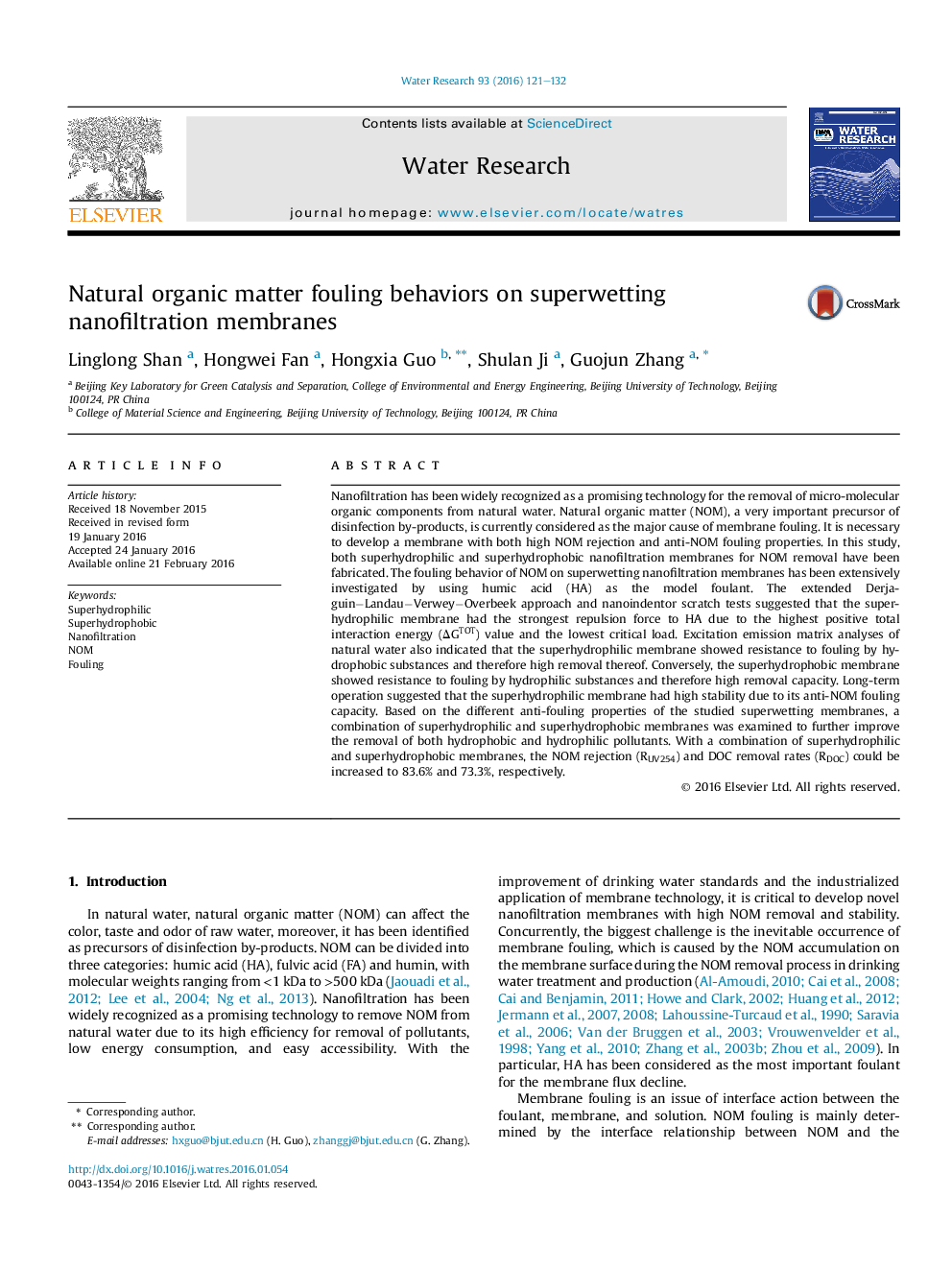| کد مقاله | کد نشریه | سال انتشار | مقاله انگلیسی | نسخه تمام متن |
|---|---|---|---|---|
| 4480942 | 1623075 | 2016 | 12 صفحه PDF | دانلود رایگان |
• Superwetting nanofiltration membranes with stable structure were fabricated.
• Hydrophilic/-phobic NOM fouling behaviors on superwetting surface was studied.
• High NOM rejection and anti-fouling ability was obtained by superwetting strategy.
Nanofiltration has been widely recognized as a promising technology for the removal of micro-molecular organic components from natural water. Natural organic matter (NOM), a very important precursor of disinfection by-products, is currently considered as the major cause of membrane fouling. It is necessary to develop a membrane with both high NOM rejection and anti-NOM fouling properties. In this study, both superhydrophilic and superhydrophobic nanofiltration membranes for NOM removal have been fabricated. The fouling behavior of NOM on superwetting nanofiltration membranes has been extensively investigated by using humic acid (HA) as the model foulant. The extended Derjaguin−Landau−Verwey−Overbeek approach and nanoindentor scratch tests suggested that the superhydrophilic membrane had the strongest repulsion force to HA due to the highest positive total interaction energy (ΔGTOT) value and the lowest critical load. Excitation emission matrix analyses of natural water also indicated that the superhydrophilic membrane showed resistance to fouling by hydrophobic substances and therefore high removal thereof. Conversely, the superhydrophobic membrane showed resistance to fouling by hydrophilic substances and therefore high removal capacity. Long-term operation suggested that the superhydrophilic membrane had high stability due to its anti-NOM fouling capacity. Based on the different anti-fouling properties of the studied superwetting membranes, a combination of superhydrophilic and superhydrophobic membranes was examined to further improve the removal of both hydrophobic and hydrophilic pollutants. With a combination of superhydrophilic and superhydrophobic membranes, the NOM rejection (RUV254) and DOC removal rates (RDOC) could be increased to 83.6% and 73.3%, respectively.
Figure optionsDownload high-quality image (567 K)Download as PowerPoint slide
Journal: Water Research - Volume 93, 15 April 2016, Pages 121–132
